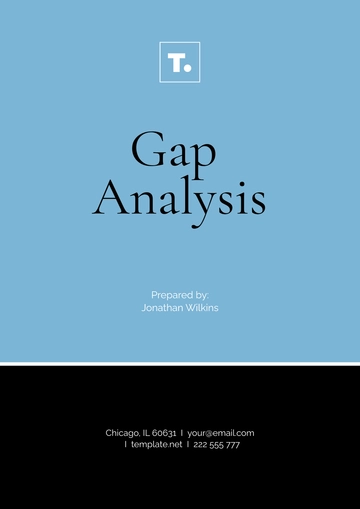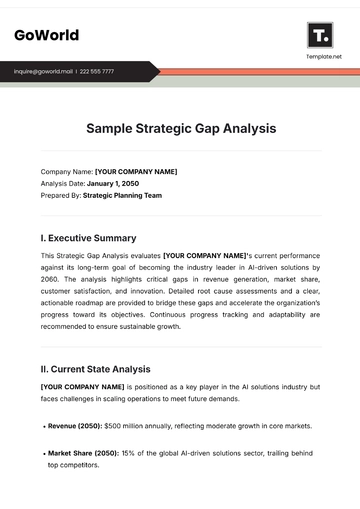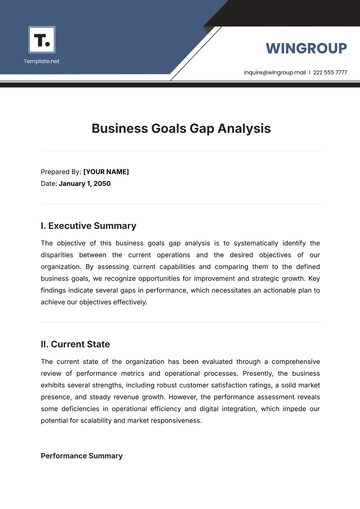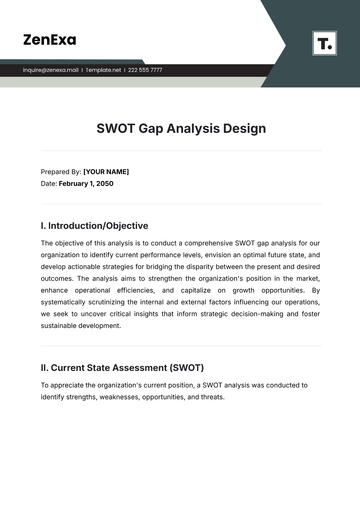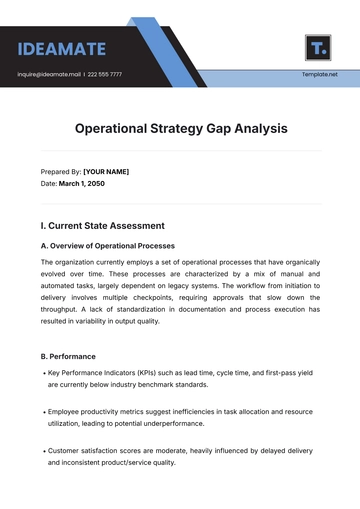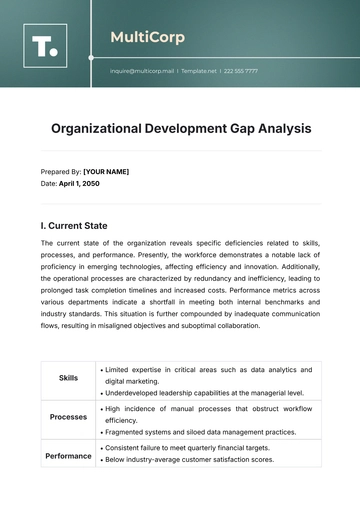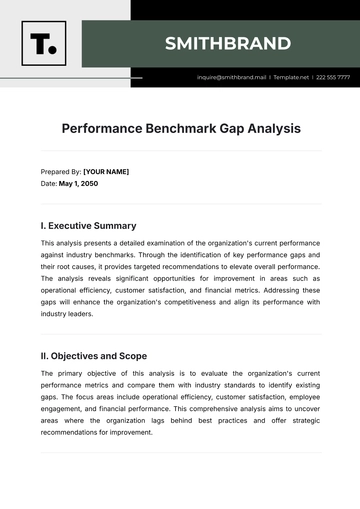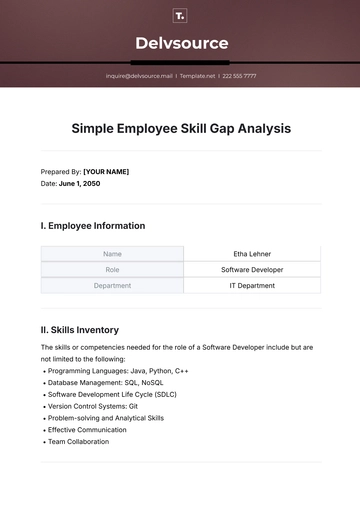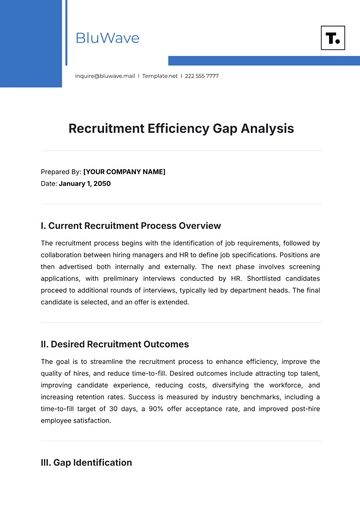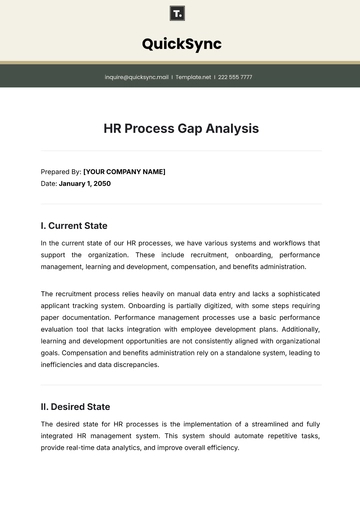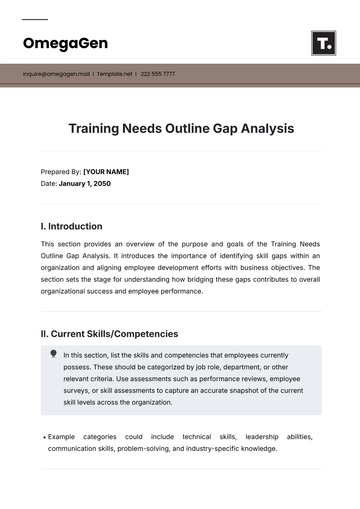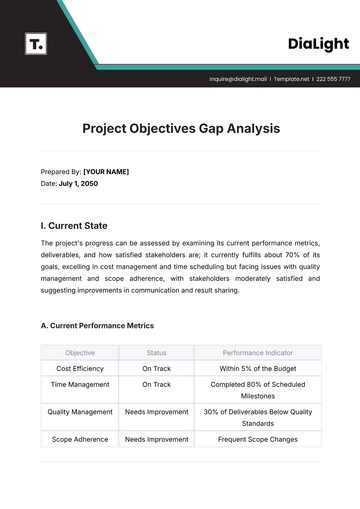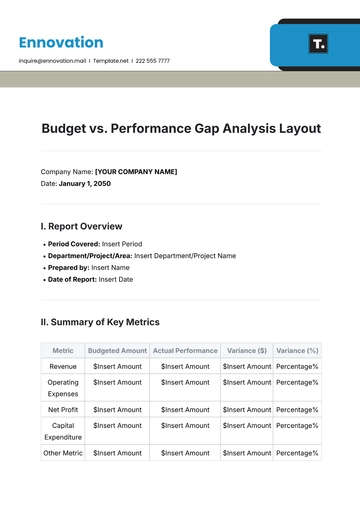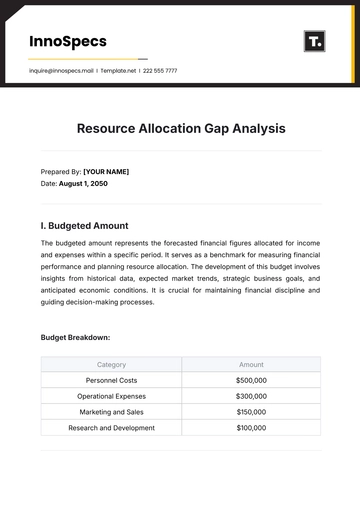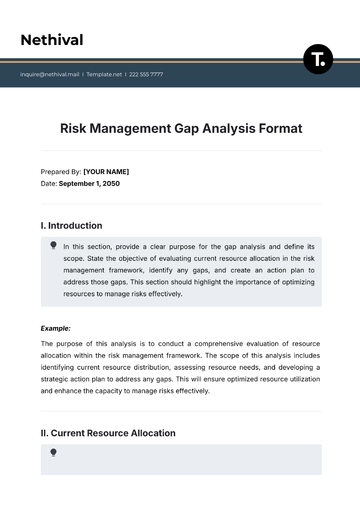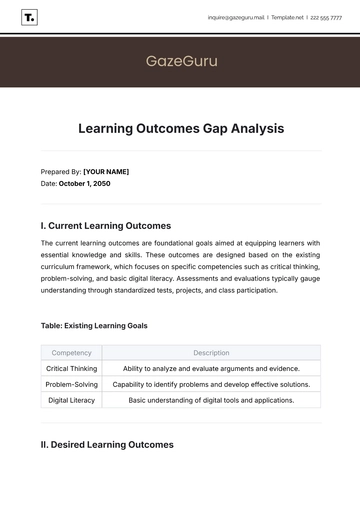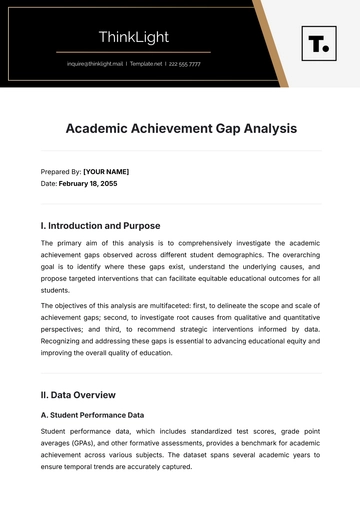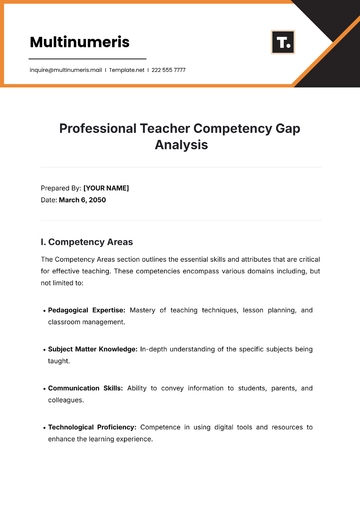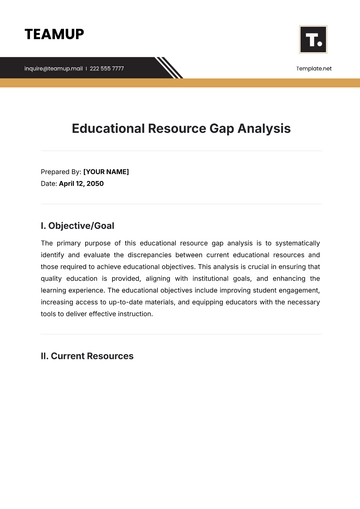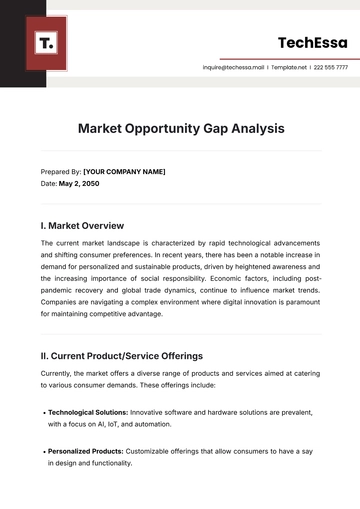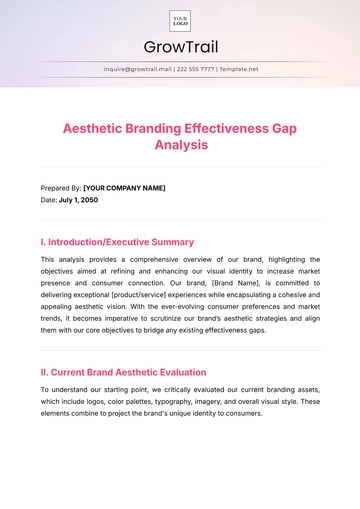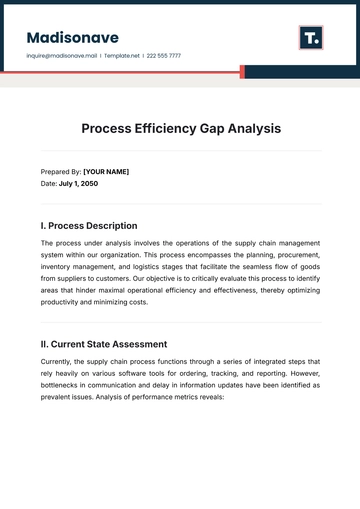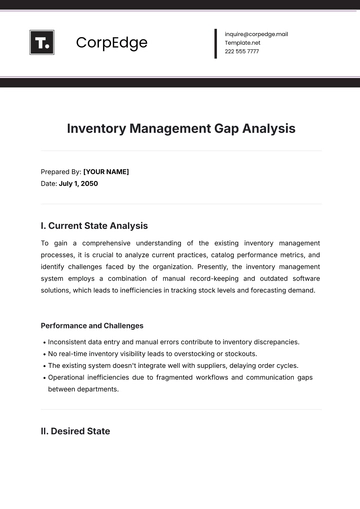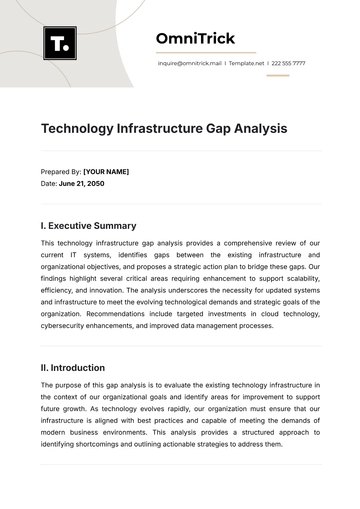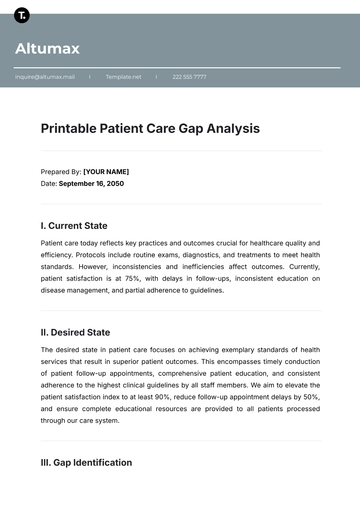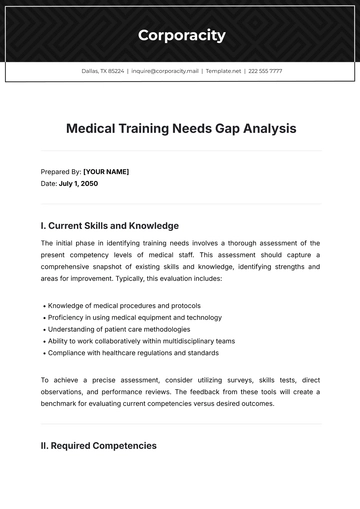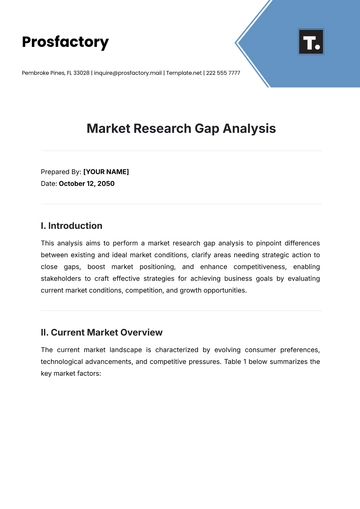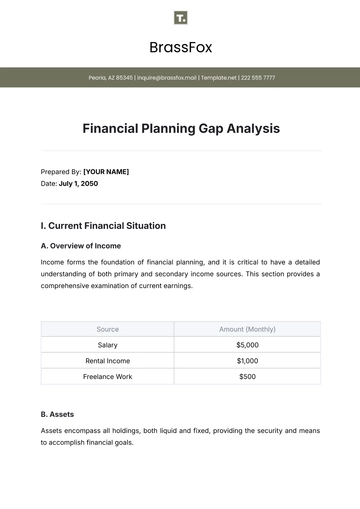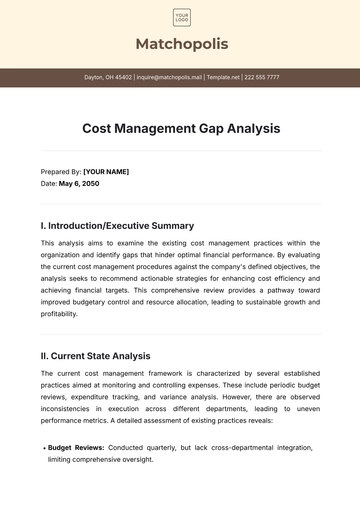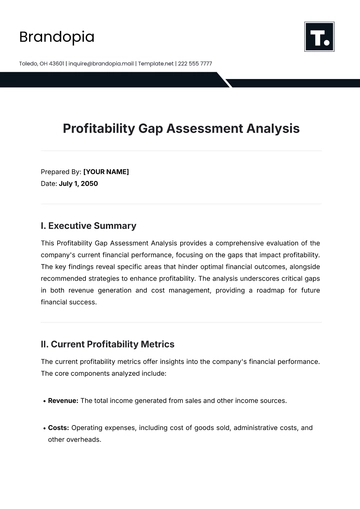Free Employee Relationship Health Audit Analysis HR
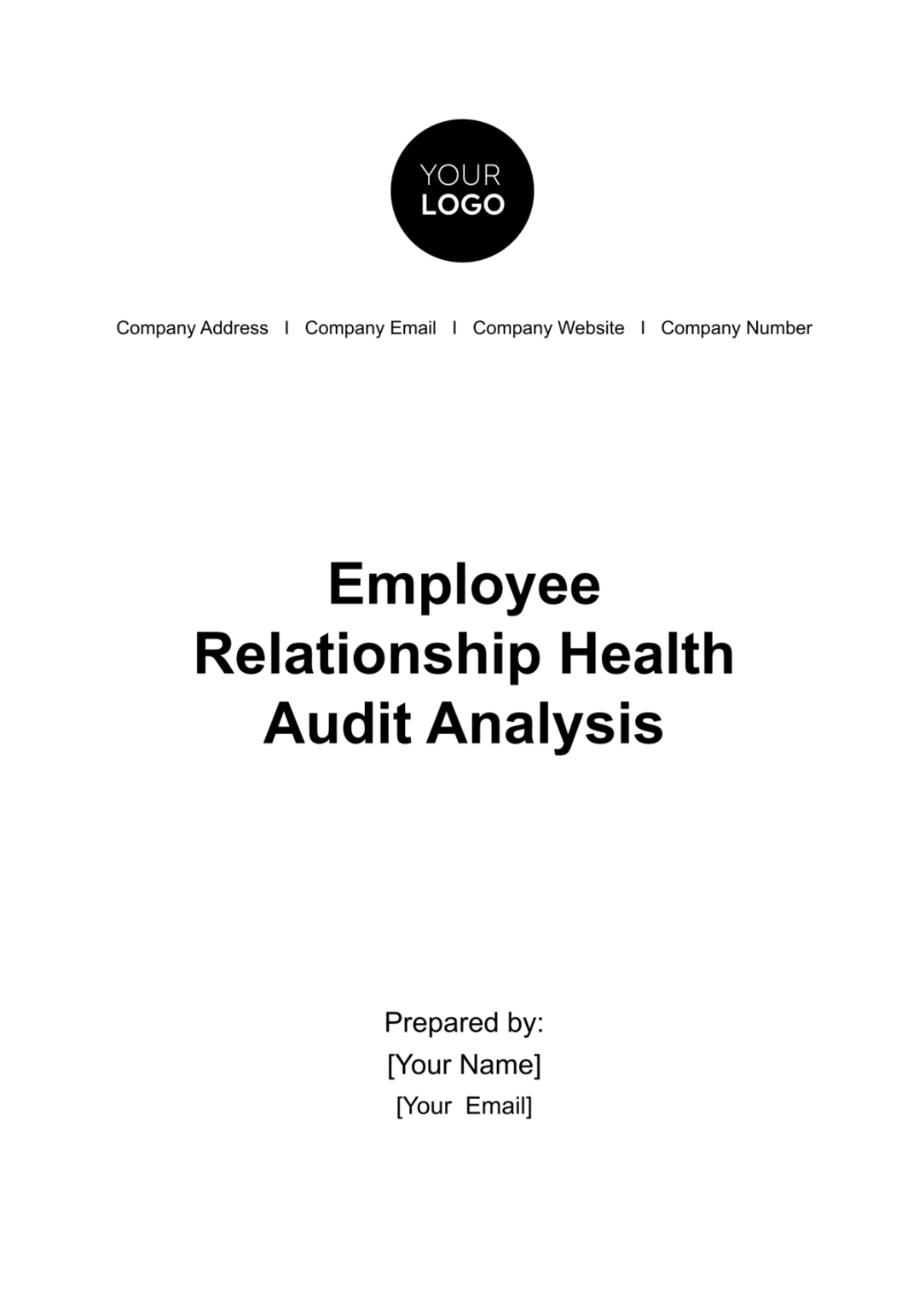
TABLE OF CONTENTS
I. Executive Summary.....................................................................................................3
II. Objective......................................................................................................................3
III. Methodology...............................................................................................................3
IV. Key Findings...............................................................................................................5
V. Recommendations......................................................................................................7
VI. Conclusion..................................................................................................................9
Date: September 19, 2050
Prepared by: [Your Name]
Department: Human Resources
Executive Summary
The Employee Relationship Health Audit, conducted on September 19, 2050, serves as a vital compass guiding [Your Company Name] towards fostering a more productive, harmonious, and satisfying work environment. This comprehensive analysis delves into the intricate fabric of employee relations, aiming to shed light on critical facets such as job satisfaction, engagement, communication, and collaboration.
Objective
The primary objective of this audit is to discern the pulse of our workforce, gain deep insights into their experiences, and identify areas that warrant enhancement within our organization. By recognizing our strengths and pinpointing areas of improvement, we can chart a course that leads to a more robust, interconnected, and thriving workplace.
Methodology
The methodology employed in the Employee Relationship Health Audit was carefully designed to capture a comprehensive and accurate assessment of our organization's employee relationships. Rigorous and systematic, this methodology encompassed the following key steps:
Survey Design | The foundation of our analysis was a meticulously crafted survey. This survey was developed collaboratively by our Human Resources team and experts in organizational psychology. It covered a wide range of topics, including job satisfaction, communication, teamwork, leadership, and work-life balance. The questions were structured to be clear, unbiased, and sensitive to the diverse experiences of our workforce. |
Survey Distribution | To ensure a representative sample, the survey was distributed electronically to all employees within the organization. Participation was voluntary and anonymous to encourage candid responses. Multiple reminders were sent to maximize participation rates, and the survey was made accessible across various devices for convenience. |
Data Collection | Over the designated survey period, responses were collected and securely stored. The data collected encompassed both quantitative metrics, such as ratings on a scale, and qualitative insights from open-ended questions, enabling a nuanced analysis. |
Data Analysis | The data analysis phase involved the examination of both quantitative and qualitative responses. Statistical techniques, including regression analysis and correlation, were used to identify patterns and trends within the data. The qualitative data was subjected to thematic analysis to extract meaningful insights and anecdotes. |
Interviews | In parallel with the survey, a subset of employees was selected for confidential interviews. These interviews provided an opportunity to delve deeper into individual experiences, gather additional qualitative data, and gain a more personal perspective on the issues at hand. Interviews were conducted by skilled interviewers trained in qualitative research methodologies. |
Cross-Functional Teams | To ensure objectivity and rigor in our analysis, cross-functional teams were formed. These teams included members from Human Resources, Organizational Development, and external consultants with expertise in employee relations. Regular meetings and discussions were held to interpret the data collectively and arrive at robust conclusions. |
Data Validation | A critical step in our methodology was data validation. The survey responses were cross-referenced with interview findings to validate the trends and themes that emerged. Any discrepancies were carefully examined and addressed. |
Confidentiality And Privacy | Maintaining confidentiality and privacy was of paramount importance throughout the process. All data collected was anonymized and aggregated to ensure that individual responses could not be traced back to specific employees. The highest ethical standards were upheld in handling sensitive employee feedback. |
Validity And Reliability
The methodology employed in this audit adhered to best practices in organizational research and survey design. Measures were taken to ensure the validity and reliability of the data collected, including pilot testing of the survey instrument and inter-rater reliability checks for interview data.
The culmination of these efforts is a comprehensive and robust analysis that serves as a valuable foundation for our organization to make informed decisions aimed at improving employee relationships, enhancing job satisfaction, and fostering a more engaging and productive workplace.
Key Findings
The key findings of the Employee Relationship Health Audit offer a profound glimpse into the intricacies of our workforce dynamics. These insights underscore the triumphs and challenges we face in nurturing a vibrant and harmonious work environment:
Overall Employee Satisfaction
Satisfaction Level | An overwhelming 82% of our employees expressed a high degree of satisfaction with their current roles and responsibilities. This striking figure reflects not only their contentment but also their alignment with our organization's mission and values. |
Feeling Valued | Equally encouraging is the fact that 78% of our employees reported feeling genuinely valued within the organization. This sentiment of appreciation fosters a sense of belonging and loyalty. |
Communication And Transparency
Communication Gaps | Despite the overall satisfaction, 66% of employees conveyed a desire for improved communication from senior leadership. This signals a notable area for improvement, as more transparent communication can foster trust and alignment. |
Transparency Hunger | A significant 75% of employees yearned for more transparency concerning company goals and strategic decisions. This underscores the importance of involving our workforce in the broader narrative of the organization. |
Teamwork And Collaboration
Positive Collaboration | It is heartening to note that 89% of employees believed that teamwork and collaboration were actively encouraged within their teams. This resounding affirmation highlights the spirit of cooperation that thrives within our organization. |
Team-Building Opportunities | However, 67% of employees expressed an appetite for more team-building activities. This represents an opportunity to further strengthen the bonds among our workforce and enhance cross-functional collaboration. |
Work-Life Balance
Balanced Lives | A commendable 72% of employees reported that they currently maintain a satisfactory work-life balance. This reflects the successful implementation of policies and practices designed to support their well-being. |
Workload Impact | Nonetheless, 28% of employees indicated that their workload occasionally encroached upon their personal lives. Addressing this issue can further enhance the quality of life for our workforce, potentially boosting morale and productivity. |
Leadership And Management
Effective Supervisors | On the leadership front, 80% of employees rated their immediate supervisors as effective. This rating underscores the positive impact of our current leadership development programs. |
Desire For Development | However, 62% of employee development opportunities. This signals a strong internal appetite for growth and underscores the need to nurture our future leaders effectively.es expressed a desire for more comprehensive leadership de |
These key findings serve as a compass, guiding our organization towards informed decision-making and strategic actions. They illuminate areas where we excel and areas that require focused attention and intervention. Through thoughtful responses to these findings, we embark on a journey to create a workplace that not only maintains its strengths but also actively evolves to meet the ever-changing needs and expectations of our dedicated workforce.
Recommendations
The recommendations presented here are the result of a thoughtful analysis of the key findings from the Employee Relationship Health Audit. They are designed to serve as a blueprint for action, guiding [Your Company Name] toward strengthening employee relationships and creating an even more vibrant, inclusive, and productive workplace.
Enhanced Communication
Regular Town Hall Meetings | Implement regular town hall meetings led by senior leadership. These gatherings can serve as a platform for executives to share updates, address concerns, and engage in open dialogues with employees. |
Internal Communication Platform | Consider the introduction of an internal communication platform, such as an intranet or digital collaboration tool, to facilitate real-time information sharing and open discussion. This platform can also house a central repository for company-wide announcements and policies. |
Transparency
Clear Communication Of Goals | Increase transparency by actively communicating company goals, strategic initiatives, and progress updates. Create a culture where employees feel informed about the bigger picture and understand how their contributions align with organizational objectives. |
Feedback Mechanisms | Develop formal mechanisms for employees to provide feedback on strategic decisions and corporate direction. Regular surveys, focus groups, or suggestion boxes can be effective tools for gathering input from across the organization. |
Team Building
Diverse Team-Building Activities | Organize a variety of team-building activities that cater to different preferences and team sizes. These activities can range from outdoor adventures to skill-building workshops and virtual team challenges. Tailor them to suit the unique dynamics of each team. |
Cross-Functional Collaboration Initiatives | Encourage cross-functional collaboration by creating opportunities for employees from different departments to work together on projects or task forces. This can break down silos and foster a sense of unity within the organization. |
Work-Life Balance
Workload Assessments | Conduct regular workload assessments to identify departments or roles where employees may be overburdened. Use these assessments to redistribute tasks, hire additional staff if necessary, or adjust project timelines to ensure a healthier work-life balance. |
Flexible Work Arrangements | Promote flexible work arrangements, such as telecommuting options or flexible hours, to accommodate employees' diverse needs. Implement clear policies and guidelines to ensure fairness and accountability. |
Leadership Development
Comprehensive Leadership Training Programs | Develop and expand leadership training programs to address the specific needs and aspirations of potential and current leaders. These programs can encompass leadership skills, emotional intelligence, and conflict resolution. |
Mentorship Opportunities | Establish a formal mentorship program that pairs emerging leaders with experienced mentors within the organization. This fosters a culture of continuous learning and provides a support system for those aspiring to leadership roles. |
Feedback And Progress Monitoring
Regular Pulse Surveys | Implement regular pulse surveys to gauge employee sentiment, track progress on recommended initiatives, and make data-driven adjustments. These surveys should be conducted anonymously to encourage honest feedback. |
Quarterly Reviews | Hold quarterly reviews with cross-functional teams to assess the impact of implemented recommendations and discuss any emerging issues or challenges. These reviews can ensure that the organization remains agile and responsive. |
Recognition And Rewards
Employee Recognition Programs | Establish formal employee recognition programs that acknowledge outstanding contributions and behaviors aligned with the company's values. Recognize and celebrate achievements at all levels of the organization. |
Performance-Based Incentives | Consider performance-based incentives and bonuses to motivate and reward employees for exceptional contributions. These incentives can include monetary rewards, additional time off, or career advancement opportunities. |
Continuous Learning And Development
Skill Enhancement Initiatives | Offer skill enhancement workshops and courses that empower employees to acquire new skills and stay up-to-date with industry trends. This investment in their growth enhances job satisfaction and professional development. |
Cross-Training Opportunities | Encourage cross-training among employees to diversify their skill sets and promote flexibility within the organization. Cross-training can foster a culture of collaboration and adaptability. |
By embracing these recommendations and tailoring them to our unique organizational context, [Your Company Name] can set a course for continuous improvement and transformation. These proactive steps aim to not only address current challenges but also position us as a progressive and employee-centric organization that attracts and retains top talent. The successful implementation of these recommendations will contribute significantly to the enhancement of employee relationships and the realization of our shared vision for the future.
Conclusion
In closing, the Employee Relationship Health Audit Analysis serves as a compass guiding [Your Company Name] toward a brighter and more prosperous future. Our journey through the intricacies of employee relationships has revealed both our triumphs and our areas for growth.
We celebrate the resounding job satisfaction and the deep sense of value that our employees derive from their roles. These positive findings affirm our commitment to providing a nurturing and fulfilling work environment.
Simultaneously, we acknowledge the call for enhanced communication, transparency, and greater work-life balance. These areas present opportunities for evolution and refinement, areas where we can harness our collective potential to create a workplace that empowers, informs, and respects every member of our team.
The recommendations put forth in this analysis are the blueprint for action. They outline a path that leads us toward strengthened employee relationships, more vibrant teamwork, and a deeper sense of purpose and fulfillment for our employees.
In embracing these recommendations and adapting them to our unique organizational context, we embark on a journey of continuous improvement. This journey is a testament to our commitment to our employees, recognizing them as the life force of our organization.
As we implement these recommendations, we pledge to remain agile, receptive, and focused on the collective well-being and growth of our workforce. Together, we shall forge ahead, creating a workplace that not only reflects our values but also empowers every member of [Your Company Name] to thrive and contribute to our shared success.
This Employee Relationship Health Audit Analysis is not merely a document but a catalyst for positive change. Let us embark on this journey together, confident that our unwavering commitment to our employees will lead us to new horizons of success and fulfillment.
- 100% Customizable, free editor
- Access 1 Million+ Templates, photo’s & graphics
- Download or share as a template
- Click and replace photos, graphics, text, backgrounds
- Resize, crop, AI write & more
- Access advanced editor
Elevate your workplace dynamics with Template.net's Employee Relationship Health Audit Analysis HR Template. This editable and customizable tool empowers HR professionals to assess and enhance employee relationships seamlessly. Crafted for efficiency, it's editable in our Ai Editor Tool, ensuring a tailored and insightful analysis for fostering a healthy work environment.
